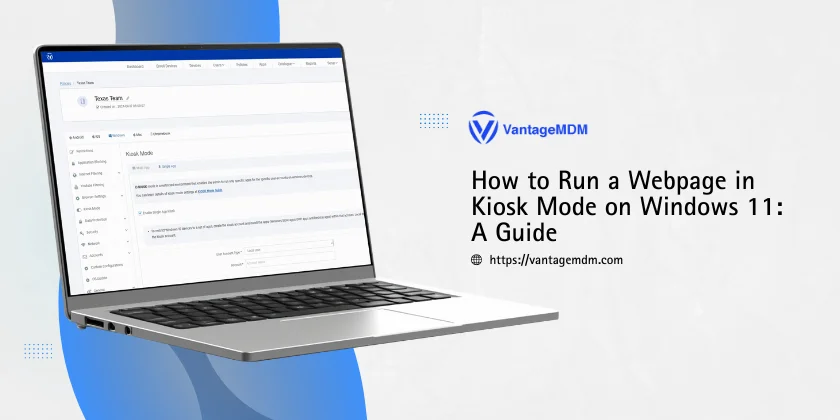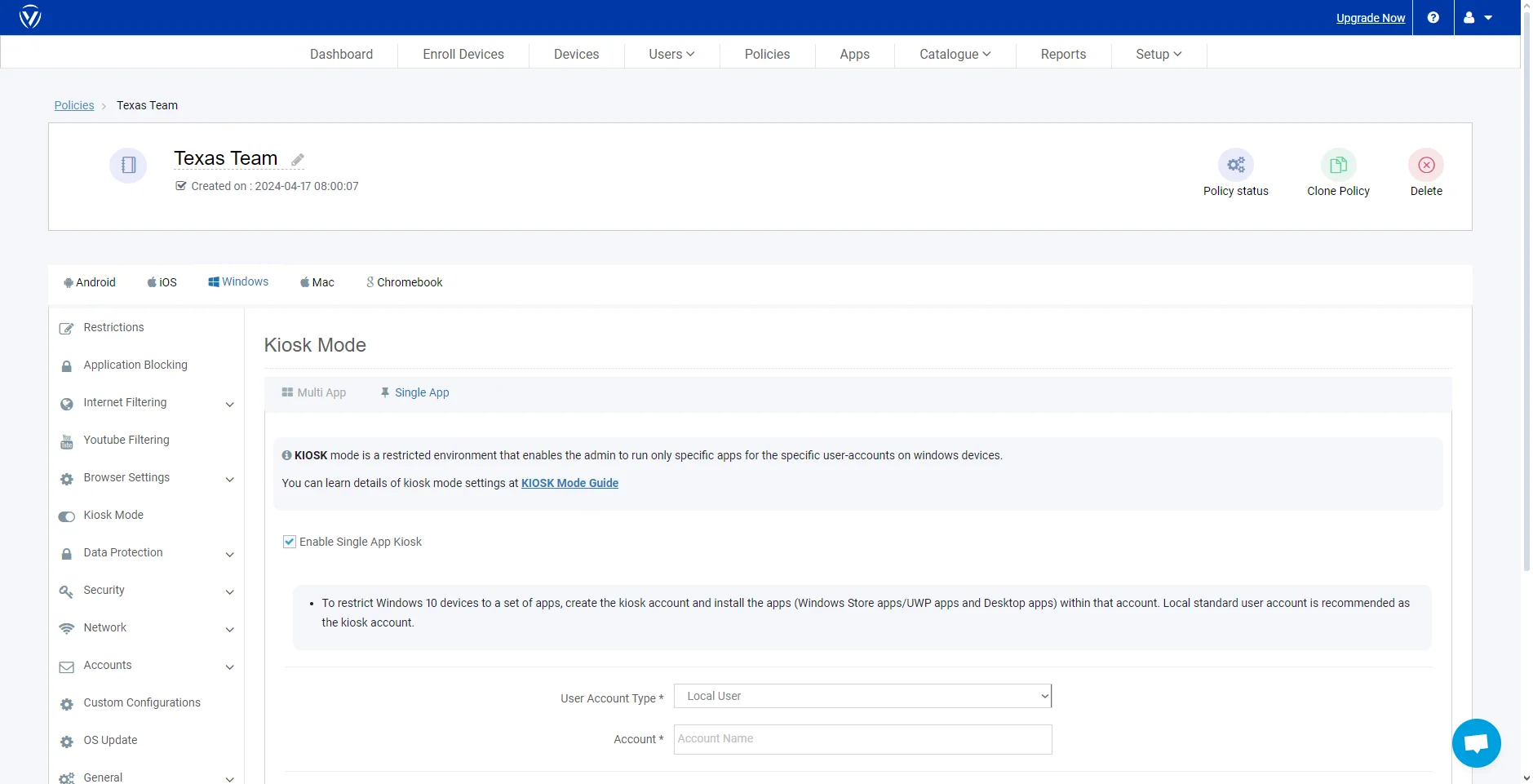How to Run a Webpage in Kiosk Mode on Windows 11: A Guide

Running a webpage in Kiosk Mode on Windows 11 is an effective way to streamline user interaction by limiting access to a single app or website. Whether you're setting this up for a public display, retail environment, or any other controlled user scenario, Kiosk Mode ensures that users can only interact with the designated content.
Why Use Kiosk Mode on Windows 11?
Kiosk Mode on Windows 11 is an excellent solution for environments where you need to restrict user access to a single application or webpage. This is particularly useful in public spaces, educational settings, or businesses where the goal is to provide a focused and secure user experience. By locking down the system, Kiosk Mode ensures that users can only interact with the designated content, reducing the risk of unauthorized access or accidental system changes. The following steps will guide you through setting up a webpage in Kiosk Mode using the VantageMDM control panel.

Step 1: Access Single App Kiosk Mode Settings
Step 2: Choose the User Account Type
Step 3: Enter the Account Name
Step 4: Configure AutoLogon Display Name
Step 5: Add the Kiosk App
Step 6: Configure Display Mode
Step 7: Set Session Idle Timeout
Step 8: Disable First Run Experience & Splash Screen
Enabling Kiosk Mode without an MDM
If you prefer to enable Kiosk Mode on Windows 11 without using a Mobile Device Management (MDM) tool like VantageMDM, you can do so directly through the Windows Settings app. This method is ideal for simpler setups or when managing fewer devices. Here’s how you can set up Kiosk Mode using the built-in tools in Windows 11:
- Open Settings: Press Win + I to open the Settings app, or click on the Start menu and select Settings.
- Navigate to Accounts:In the Settings window, click on Accounts from the left-hand menu.
- Go to Family & Other Users:Select Family & Other Users from the options under Accounts.
- Set Up a Kiosk: Scroll down to the Set up a kiosk section and click Get started.
- Create a Kiosk Account: Follow the prompts to create a local user account that will be used exclusively for Kiosk Mode. This account will be locked down to run only the selected app.
- Choose the Application: Select the app you wish to run in Kiosk Mode. For a webpage, choose Microsoft Edge and specify the URL you want to be displayed.
- Configure Additional Settings: Depending on the app, you might have additional options like choosing full-screen mode for the browser or setting up a specific session timeout.
- Complete the Setup: Finalize the setup by following the remaining prompts. Once completed, the system will automatically enter Kiosk Mode when this account is logged in.
This built-in method is particularly useful for smaller environments or personal setups where full MDM control isn't necessary.
Windows 11 Kiosk Mode: Streamlined Operations for Secure Access
Windows 11 offers a robust Kiosk Mode feature that ensures a seamless and secure user experience. For businesses and organizations, this feature simplifies control over device access, making it ideal for public-facing setups or restricted environments. By configuring the mode correctly, you can enhance productivity while reducing risks.
With tools like Windows 11 Kiosk Mode, users gain the ability to streamline operations, ensuring consistent performance. Additionally, setting up Windows 11 Kiosk Mode through solutions such as VantageMDM allows for broader scalability and management ease.
Using an MDM solution like VantageMDM to enable Kiosk Mode on Windows 11 offers several distinct advantages, particularly for businesses and organizations managing multiple devices. Here’s why opting for an MDM-based setup can be beneficial:
- Centralized Management: With VantageMDM, you can manage all your devices from a single control panel, allowing you to deploy, configure, and monitor Kiosk Mode settings across multiple devices simultaneously. This centralized approach saves time and ensures consistency across your organization.
- Enhanced Security: MDM solutions provide advanced security features, including the ability to enforce policies, monitor compliance, and remotely lock or wipe devices if necessary. This level of control is crucial for protecting sensitive information and maintaining a secure environment.
- Scalability: Whether you’re managing a small fleet of devices or thousands across multiple locations, VantageMDM scales effortlessly. It allows you to easily add new devices, adjust settings, and ensure that your Kiosk Mode configurations are uniformly applied, regardless of the number of devices.
- Automated Updates and Maintenance: MDM tools like VantageMDM can automate the process of updating apps and system settings, reducing the need for manual intervention. This ensures that all devices are running the latest versions of software, improving performance and security.
- Customizable User Experience: VantageMDM offers more granular control over the user experience, enabling you to customize settings like auto-logon display names, session timeouts, and application configurations. This helps tailor the Kiosk Mode experience to meet the specific needs of your users.
However, enabling Windows Kiosk Mode without an MDM solution can present significant disadvantages. Without centralized management, you’ll need to configure each device individually, which is time-consuming and prone to inconsistencies. Additionally, manual updates and maintenance increase the risk of outdated software and security vulnerabilities. For organizations with multiple devices, these limitations can hinder efficiency and security, making an MDM solution a more effective choice for managing Kiosk Mode at scale.